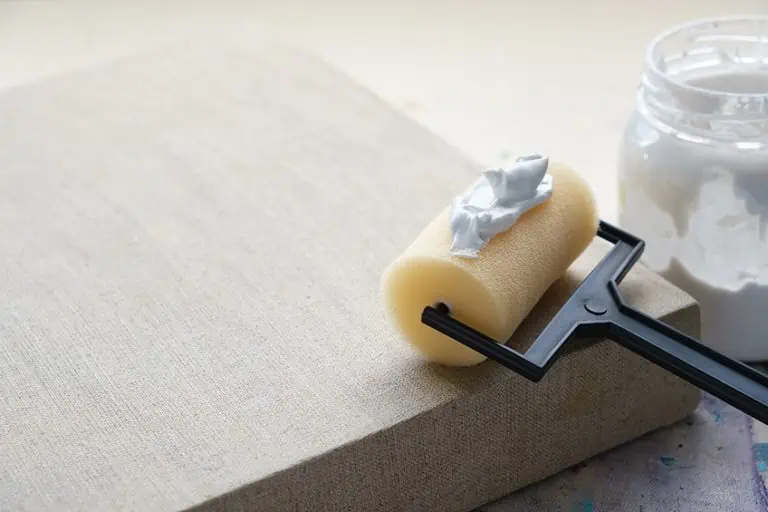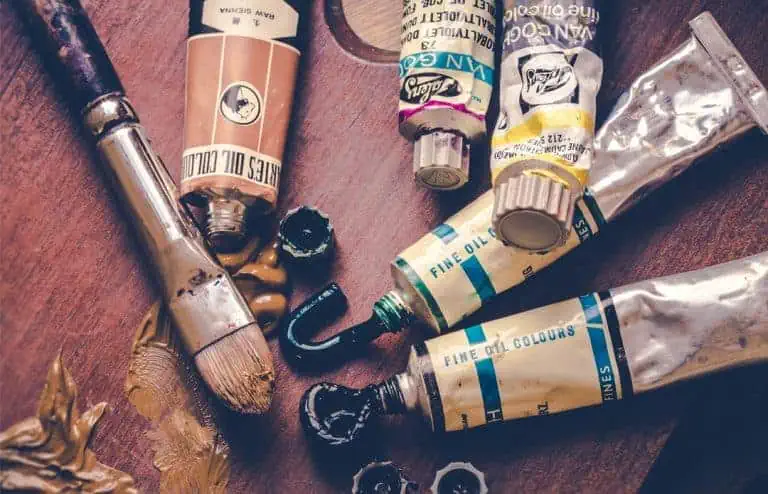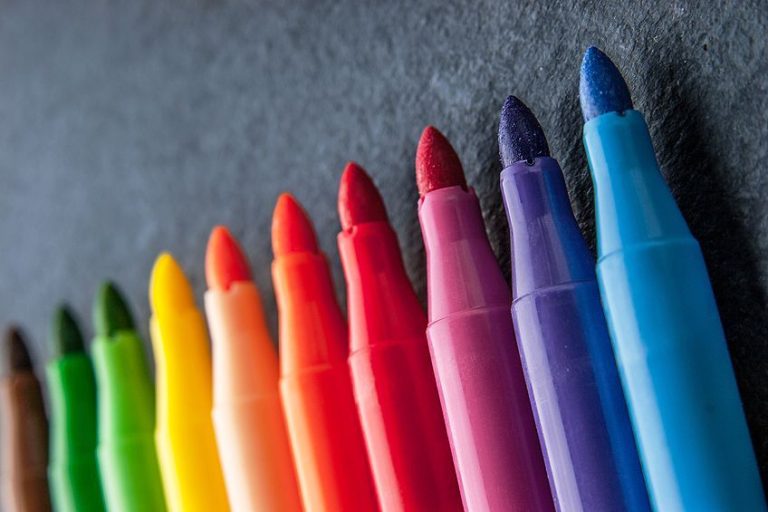Acrylic Painting for Beginners – Painting with Acrylics Tutorial
This post may contain affiliate links. We may earn a small commission from purchases made through them, at no additional cost to you.
Painting is an excellent artistic escape. The process is loads of fun, and it allows you to really express your creative vision. If you are interested in starting painting, then choosing acrylics is a great way to go. Acrylic painting for beginners is easy to manage, more affordable than other mediums, and versatile for all kinds of paintings. Painting with acrylics is less intimidating than other complex painting mediums, allowing a brilliant platform to master your abilities on canvas.
Table of Contents
Advantages of Acrylic Painting for Beginners
Painting with acrylics offers many benefits to first time users. Working with them is more user-friendly and easy to manage than other mediums. This makes acrylic painting for beginners the preferred medium. Below are some of the advantages of using this type of paint.
Fast Drying
A big benefit to acrylic paint is its quick-drying capabilities. Compared to oil paints, this is a real game-changer. Acrylic paints allow you to quickly paint over previous layers without having to wait around for them to dry. Acrylic paints will usually take around 20 to 30 minutes to dry. Some artists may experience slight issues with this fast-drying time when it comes to blending the paint on canvas. However, you can always prolong the drying time if you need you. This can be done by spraying water over the canvas with a mist bottle to keep it wet. A special product called extender can also be mixed into the paint to give it a longer drying time.
A Versatile Medium
One of the big reasons to choose acrylic painting for beginners is its versatile usability. This medium can be used in a wide variety of ways. You can water it down easily to achieve an effect similar to a watercolor painting. You could also use thick paste-like acrylic paints to provide an effect similar to oil painting. When artists get comfortable with using acrylic paints, there is plenty of room to play around. Various forms of the paint exist with different consistencies, textures, shines, and other factors that provide a different look and feel.
Water-Based
Acrylic paints have a structure that is completely water-soluble. When dry, these paints are actually fully water-resistant. When wet though, they can be easily mixed with water. This is because the paints are made up of pigments combined with a water-soluble acrylic polymer. This makes acrylic paints very easy to clean up – whether on your canvas, brushes or spilled somewhere. You can also easily thin and water down the paints which allows you to paint in various different techniques.
Can Be Used on All Kinds of Surfaces
While using a stretched canvas is the most common surface for painting over, acrylics can be used on just about anything. When learning how to paint with acrylics, you can start on practically any surface. This includes paper and canvas but can extend to wood, stones, fabric, walls, tiles, and just about anything else. This allows you to really extend your creativity, and paint on anything you would like to.

The Different Types of Acrylic Paint
When choosing the right acrylic paint, there are a couple of different factors to consider. These include the surface you are painting over, your budget, and the kind of color quality you would like to get. In painting with acrylics, there are three main types of paint to choose from. These are student-grade paints, craft paints, and artist-grade paints. Within these categories, there are various different brands and options. Each one with its own unique set of pros and cons. Acrylic paint can also be made at home with pigments, solvent, and a binder.
Craft Paints
If you are after the most affordable style of acrylic paint, then you should take a look at craft paints. These cheaper options can be used on various surfaces for crafts projects. These include plastic, wood, papier-mache, ceramics, and more. These types of paints are also very easy to get your hands on.
Craft paints are perfect for all manner of crafting projects that require a convenient and affordable paint finish. These paints have a great smooth consistency and are very user-friendly. However, as these paints are cheaper they do have their downsides.
Craft paints have a less impressive pigment quality, and will not provide good results when used in fine art painting. Because of the pigment quality, mixing these paints is also a challenge. Craft paints have a higher ratio of filler to pigment. This makes them a good choice for painting single blocks of color over various surfaces, but they will limit your artistic expression if you want to use them with greater complexity.
Student-Grade Acrylic Paints
Student-grade options offer the perfect medium for acrylic painting for beginners. These are paints with significantly higher quality compared to craft paints. Student-grade paints are made by the same producers of artist-quality acrylic paints, and they offer a good level of pigmentation. This allows you to easily mix and blend colors fr more detailed painting. These paints are a popular beginner’s choice as they are more affordable than artist-grade paints, and therefore less intimidating. It is ok to experiment with them and waste some paint. These paints still have the same color names as higher grade paints. This makes you feel like you are using artist-quality products, and it will help you to get more familiar with the paints. This means the transition to a new set of paints becomes much easier.
Even though these paints are ideal for learning how to paint with acrylics, they are a mid-range option and have some downsides. The pigmentation is not always as high as more premium paints, and you can experience some variations here. Student-grade paints that use synthetic pigments tend to have less filler than the natural pigment varieties. This makes it easy to compare to artist-quality paints.
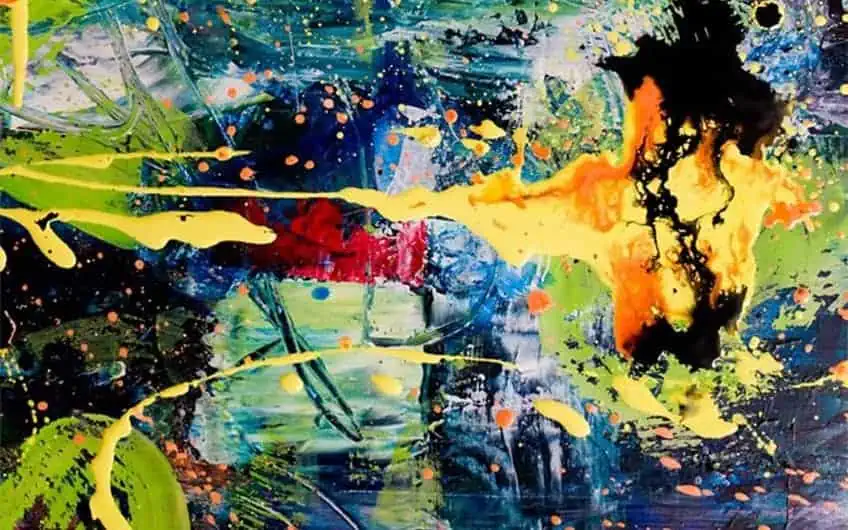
Artist-Grade Acrylic Paints
If you are looking for the absolute best acrylic paints, then artist-grade options are where you should look. These are paints of the highest quality and can be used for detailed fine art paintings. The most expensive artist-grade acrylic paints are the ones with the most pigmentation. This helps you to always get the best value for money, and know what you are paying for. However, this also means that different colors can vary in price. This is because some pigments, especially natural ones, are harder to find.
The main benefit of this type of paint is the color quality, and its vibrancy when mixed. These paints have a very smooth consistency, which allows you to mix and work with them much easier. When choosing artist-grade paints, there are a couple of different thickness options available. These include heavy body, soft body, or high flow paints.
Each type of thickness has its unique benefits, and you should choose them based on the type of end-result finish you are after.
Heavy Body Acrylic Paints
Heavy body paints are one of the most popular choices for both experienced artists and beginners. These paints have the thickest consistency and will spread out smoothly with a brush or palette knife. In terms of consistency, these paints are most similar to oil paints, and can also be used for making textured effects on a canvas. A reason that acrylic painting for beginners can be easily achieved with hard body paints is that they can be easily watered down – making them versatile and great to experiment with.

Soft Body Paints
As you could guess, these acrylic paints have a softer, smoother consistency. They are more like cream while heavy body pints are similar to butter. These paints are great for painting with opaque effects and are perfect for using in a watercolor style. These paints can be easily used to cover up underlying later thanks to their opacity. Painting with acrylics of this consistency is more forgiving – perfect for beginners.
High Flow Paints
Acrylic painting for beginners is best achieved with the two types of paint mentioned above. However, if you have been painting with acrylics for some time and want to experiment a little, then high flow paints are a fun choice.
This reasonably new style of paint has a consistency that is very similar to ink. These paints can be used for all sorts of effects and can produce a range of different textures that you just can’t get with other acrylic paints. You can use them in an airbrush, drip them, splash them, and more. High flow paints still manage to have a strong pigment quality, and won’t let you down when it comes to color. This is a unique style of paint that is fun for trying out new techniques.
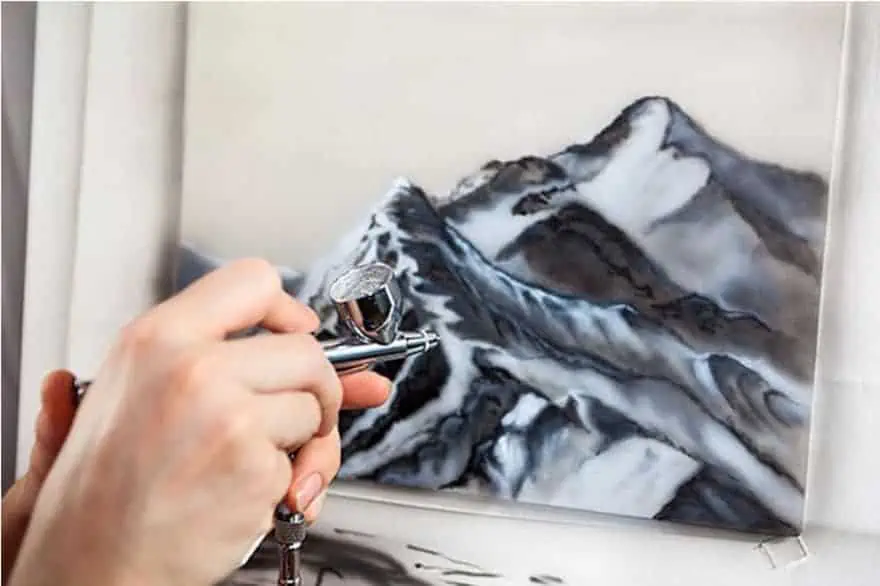
How to Make Acrylic Paints
There are so many different acrylic paint options out there that it is easy to find the perfect paint for your needs. However, making your own can also be a fun and rewarding process. The process is actually pretty simple and does not involve a long list of difficult materials. Want to know how to make acrylic paints yourself? We have included a step by step guide below.
- Mix together color pigment powder with water or a solvent. The solvent can be clear alcohol, like vodka. Use a spatula to mix this all together.
- When the pigment powder has been completely mixed in with the solvent, add a binder or an acrylic gel.
- Simply mix this all together again and your paint is ready. This should have the same consistency as any shop-bought acrylic paints and should be used in the same way.
Things Needed for Starting Acrylic Painting for Beginners
When starting acrylic painting, you don’t have to go and get every piece of equipment and accessory available. This is really just a simple art form and only requires the basics. Below are some of the essential items needed for getting started with this type of painting.
Acrylic Paint Brushes
Choosing brushes can be quite intimidating for beginners, There are so many different options out there, and it can be difficult to know which ones you actually need. All you need are just a couple of simple and versatile brushes of good quality. You can always add more brushes to your collection as time passes. Just understand the unique features of different brushes,m and what they can be used to achieve. When doing acrylic painting for beginners, synthetic brushes are usually the preferred choice.
Brushes are your essential tool, so taking care of them is important. Out of the many different brush styles available, some good ones to choose for starting out include:
- A round brush
- Flat brush
- A palette knife
- Fan brush
- An angled brush
- Liner brush
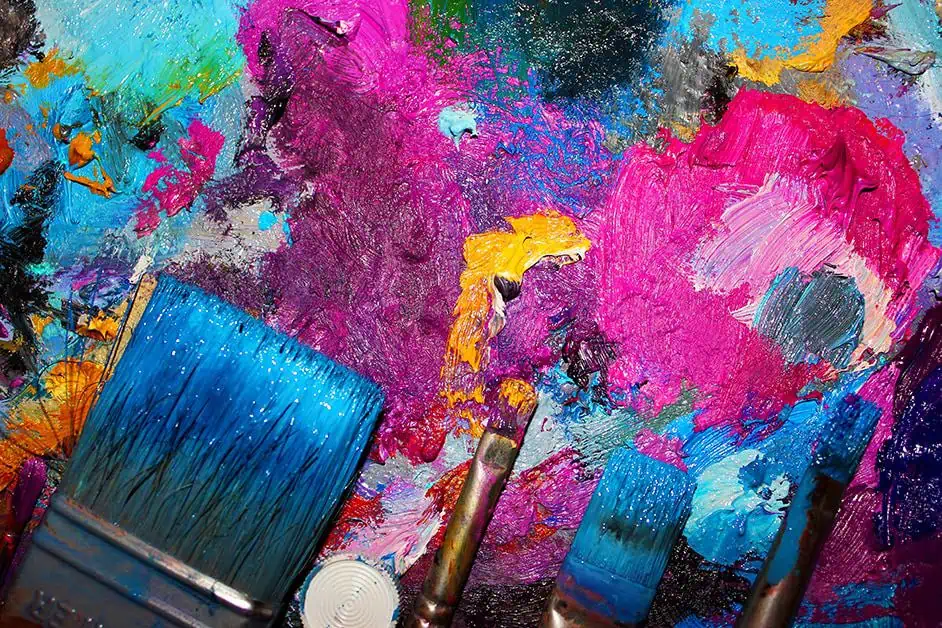
Caring for Your Brushes
Taking proper care of your brushes is necessary for getting good life out of them and maintaining their favorable qualities. Luckily acrylic paint is really easy to clean and only requires some soapy water. Always clean your brushes while the paint is still wet straight after painting.
Lie the brushes down flat when drying them. This will stop the water from running into the metal ring and breaking down the glue. Water running down the brush could also damage the wooden handle. Once dried, store the brushes with the bristles facing upright.
Canvas
One of the key benefits of using acrylic paint is how it can easily be used over a wide variety of surfaces. Artists usually use a stretched canvas for their paintings. These are available in all kinds of different sizes and shapes. Canvas boards are another more affordable solution here. However acrylic paint works well on all kinds of surfaces, like wood or tiles.
Palette
A palette is used to hold the wet paints and mix them on. Once you buy a palette, it can be used throughout your artistic career. Buying a good one is therefore a good idea. Palettes can be made from wood or plastic, and are really very simple pieces of equipment.
Step-by-Step Painting Guide for Beginners
As soon as you have all of your paints and equipment together and ready, it’s time to get painting. Here is our beginners guide on how to get started.
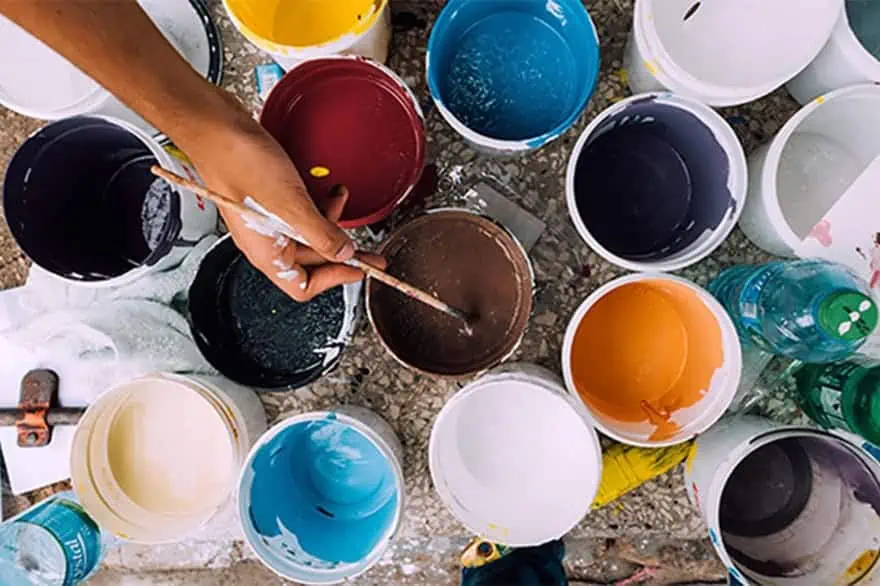
Get the Workspace Ready
Before starting it is important to have all of your equipment set up and ready to go. Start by setting up your canvas. This should be propped up somehow – using an easel is best. Then make sure to have two jars of water at the ready. One should be used for cleaning off your brushes, and the other one for diluting the paints. Many artists like to have a misting spray bottle available too. This is to keep their painting wet to stop it from drying too quickly.
Mix the Colors
Part of being a good artist is knowing how to mix together your paints and create colors. This is done on your palette board with a palette knife. Acrylic painting for beginners step by step color mixing guides are available to make this process easier to understand. However, the only real way to get at mixing paints is to just practice and experiment. The more you do it the better you will get.
Have Fun Experimenting
If you have never painted with acrylics before, consider starting on paper before moving over to the canvas. Do some experimenting to see how the paints react, how they blend, dry, etc. This will also help you to get a feeling for different brush strokes.
Various step by step painting tutorials are available online to help provide inspiration. Maybe paint swatches of the different colors onto paper first, just to understand how each color comes through and what painting with them feels like. We have a separate article about acrylic paint on paper.

Painting Your Canvas
Once you have all your tools ready and understand how your acrylic paints work, it’s time to get going on canvas. Moving over to a canvas can be scary for beginners. Our step by step painting tips below should help to guide you through this process.
Plan the Painting
Before your paintbrush hits the canvas, you can do some simple planning first. Sketching directly onto the canvas with a pencil can help to provide a good framework for the painting to follow. You can also have a photograph or picture nearby to use as a reference while you paint.
Paint From Light to Dark
In painting, it’s always easier to make the tones darker, but getting them lighter is a challenge. Always start with your lightest tones, and add the darker ones as you go along. A step by step painting process of adding layers of darkness is important for achieving quality results.
Paint Large to Small
You should also always start with the biggest shapes and gradually move towards painting the smaller ones. Never start with the small details and expand from this. Always start with the big basic designs and add finer details as you paint.
Drying Time
Acrylic painting for beginners is often affected by the medium’s fast drying time. Be cautious of how quickly the paints dry, and work smart with them. Only mix the colors that you need on your palette, and never mix too much of them. You can always mix more paint, but you can’t reuse dried wasted paint. Most of the color mixing should also be done on the palette and not the canvas when starting out. Using a misting spray bottle will also help to keep the paint wet for longer.
The Finishing Touches
The water-resistant qualities of acrylic paintings make them easy to preserve and manage. If you do want to add a final finish to the painting though, you can use a special acrylic varnish for extra protection. This adds a glossy coating that will protect the painting from scratches and damage.

Our acrylic painting for beginners step by step guide should have covered everything you need to know for getting started with this painting medium. From knowing how to make acrylic paints to using them, this medium is a versatile and user-friendly one for all levels of artists. Happy painting!
Frequently Asked Questions
Which Paint is Best for Beginners?
Acrylic painting for beginners is an excellent choice as this paint is easy to work with, fast-drying, and relatively affordable. Acrylic paints can also be used on wide-ranging surfaces and are durable. These paints are water-soluble and easy to clean up, making them a practical beginner’s choice.
Which Acrylic Paint Colors do You Need?
There are loads of available colors, and choosing a wide variety can seem daunting. To start with, always have the primary colors plus white and black. These colors can be mixed to create any other color you may want. Special beginners acrylic paint sets are also available that offer a range of the most useful colors.
Do You Need a Wet Brush When Using Acrylic Paints?
As acrylic paints are water-soluble, it is generally a good idea to slightly wet the paintbrush before using them. This will help to achieve a slightly thinner consistency that is easier to paint with. However, just be wary not to dilute the paints too much.
Do You Need to Prime Canvases for Acrylic Painting?
You should paint acrylics over a primed surface. Many canvases come already primed for painting over, and some require priming yourself. For beginners, buying pre-primed canvases is recommended as it is much easier.
Are Acrylic Paints or Oil Paints Easier to Use?
Oil paints do not dry as quickly and are easier to blend colors and mix. They also allow you to enjoy a longer working time while painting. However, acrylic paints are more user-friendly in every other aspect. Acrylics are water-soluble and easy to clean up, fast-drying, and more versatile in terms of the effects that they can create.
In 2005, Charlene completed her wellness degrees in therapeutic aromatherapy and reflexology at the International School of Reflexology and Meridian Therapy. She worked for a company offering corporate wellness programs for several years before opening her own therapy practice. In 2015, she was asked by a digital marketer friend to join her company as a content creator, and it was here that she discovered her enthusiasm for writing. Since entering the world of content creation, she has gained a lot of experience over the years writing about various topics such as beauty, health, wellness, travel, crafting, and much more. Due to various circumstances, she had to give up her therapy practice and now works as a freelance writer. Since she is a very creative person and as a balance to writing likes to be active in various areas of art and crafts, the activity at acrylgiessen.com is perfect for her to contribute their knowledge and experience in various creative topics.
Learn more about Charlene Lewis and about us.


